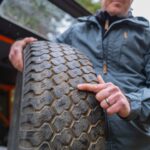Sun exposure can take a serious toll on your car’s paint job. Over time, UV rays cause the clear coat to break down, leading to fading, oxidation, and an overall dull appearance. But don’t worry, you don’t always need a professional body shop to restore your vehicle’s shine. With the right tools and a bit of elbow grease, you can tackle sun damage repair yourself. This guide will walk you through each step on how to repair sun damage on a car and bring back that showroom gleam.
Step 1: Sanding the Damaged Area
The first crucial step in repairing sun-damaged car paint is sanding. This process removes the damaged clear coat layer and creates a smooth surface for the new paint to adhere to. You’ll need fine-grit sandpaper – typically around 1500 to 2000 grit – and a sanding block or pad for even pressure.
Gently sand the affected area using circular motions. The key here is to be patient and avoid applying too much pressure. You’re aiming to remove the hazy, damaged top layer without digging into the good paint underneath. Continue sanding until the surface feels smooth and the faded or oxidized paint is no longer visible.
Alt text: Preparing car for paint repair by sanding sun damaged clear coat in circular motions, ensuring a smooth surface for primer application.
Sanding is essential because it not only removes the damaged paint but also “keys” the surface, providing better adhesion for the primer and subsequent paint layers. Consistent circular motions help ensure even sanding, preventing swirl marks and creating a uniform base for a flawless finish. Using a sanding block or pad distributes pressure evenly across the sandpaper, minimizing the risk of uneven sanding and potential damage to the underlying paint.
Step 2: Applying Primer
Once you’ve thoroughly sanded the damaged area and wiped away any sanding dust, it’s time to apply primer. Primer is a base coat that serves several important functions. It helps the new paint adhere properly, seals the sanded surface, and provides a uniform color base for the top coat. Use an automotive primer specifically designed for car paint repair. You can apply primer using either a spray can or a paint gun, depending on the size of the area you’re working on and your comfort level.
Apply a thin, even coat of primer over the sanded area, ensuring complete coverage. Avoid applying too much primer in one go, as this can lead to runs and drips. It’s better to apply multiple thin coats, allowing each coat to dry according to the manufacturer’s instructions before applying the next. This promotes better adhesion and a smoother, more durable finish.
Alt text: Applying automotive primer to a car panel after sanding, creating a foundation for paint adhesion and a uniform surface for color.
Primer is crucial for achieving a long-lasting and professional-looking repair. It fills in minor imperfections left after sanding and creates a smooth, consistent surface for the color coat. It also enhances the paint’s color and provides better protection against corrosion. Always allow the primer to dry completely before moving to the next step; this ensures proper adhesion and prevents paint defects.
Step 3: Painting the Damaged Area
Now for the exciting part: applying the color coat! For a seamless repair, it’s vital to use automotive paint that precisely matches your car’s original color code. You can find your car’s color code on a sticker usually located in the door jamb, glove compartment, or under the hood. Purchase the correct paint and, ideally, clear coat from an auto parts store.
Apply the paint in thin, even layers, using smooth, overlapping strokes. Just like with the primer, multiple thin coats are better than one thick coat. Allow each coat to dry slightly to become tacky before applying the next. This prevents runs and ensures even color distribution. Continue applying coats until you achieve full and even color coverage that blends seamlessly with the surrounding original paint.
Alt text: Applying thin coats of automotive paint to repair sun damage on car body, blending new paint with existing car color for seamless restoration.
Choosing the right automotive paint is essential for durability and color accuracy. Automotive paints are formulated to withstand the harsh outdoor environment and provide long-lasting protection against UV rays and weather elements. Applying thin, overlapping coats prevents paint runs and ensures even coverage, resulting in a professional-looking finish that matches the original car paint.
Step 4: Applying Clear Coat
To protect your newly painted area and restore that factory shine, the final step is applying a clear coat. Clear coat is a transparent layer that goes over the color coat, providing gloss, depth, and crucial protection against UV rays, scratches, and environmental contaminants.
Apply clear coat in thin, even coats, similar to how you applied the paint. Allow each coat to dry slightly before applying the next. Typically, two to three coats of clear coat are sufficient. Ensure you follow the manufacturer’s instructions for drying times and any specific application recommendations. Once the final coat of clear coat is dry, you can lightly buff the area with a polishing compound for an even greater shine if desired.
Alt text: Final step in car paint repair – applying clear coat for enhanced gloss and durable protection against sun and environmental damage.
Clear coat is vital for protecting your paint repair and ensuring its longevity. It acts as a barrier against the elements, preventing future sun damage, oxidation, and fading. Applying multiple thin coats of clear coat creates a durable and glossy finish that enhances the appearance of your car and protects your hard work.
By following these steps, you can effectively repair sun damage on your car and restore its paintwork to its former glory. DIY car paint repair is a rewarding process that saves you money and allows you to take pride in maintaining your vehicle’s appearance.

